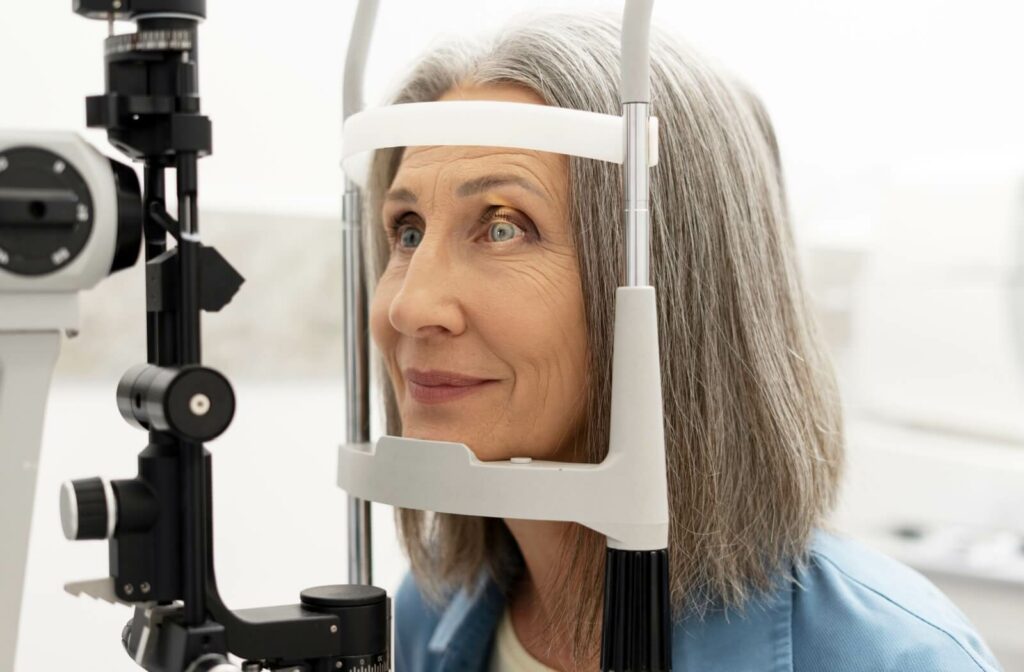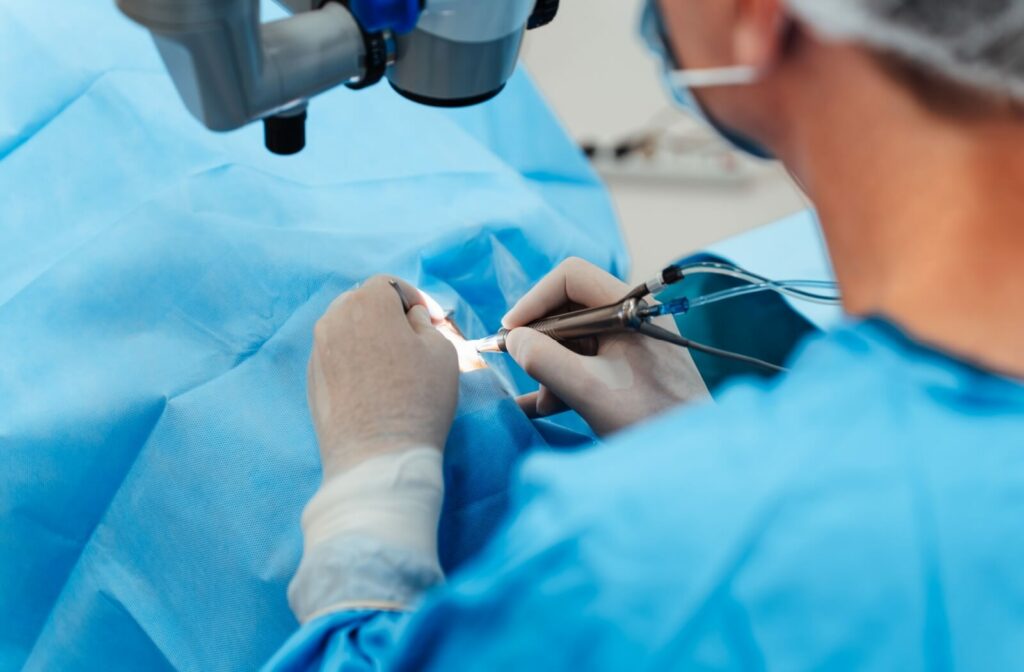Having cataract surgery on both eyes at once might seem like an efficient approach, but it’s usually done one eye at a time. This produces the best outcomes and helps safeguard your long-term vision health.
While some eye care professionals recommend waiting one to four weeks between procedures, at our clinic it is also common to perform the surgeries closer together—for example, on a Monday and Thursday of the same week.
What Are Cataracts?
Cataracts occur when the lens of your eye becomes cloudy, leading to blurred or diminished vision. Cataracts often develop slowly and can make everyday activities like reading or driving difficult.
Symptoms of cataracts include:
- Faded or dull appearance of colors
- Increased sensitivity to glare or bright lights
- Difficulty seeing clearly in low light
- Trouble reading small print or signs
While cataracts are a natural part of aging, other contributing factors include eye injuries, diabetes, or prolonged exposure to ultraviolet (UV) rays. Fortunately, cataract surgery restores vision and quality of life for 97% of people.
Why Is Cataract Surgery Done One Eye at a Time?
Cataract surgery involves replacing the clouded natural lens with a clear artificial lens, offering sharp vision for most patients. Even though it is a safe and routine procedure, most ophthalmologists recommend operating on one eye at a time for several reasons.
Prioritizing Safety
Operating on one eye first reduces the risk of rare complications like infection or inflammation affecting both eyes at once. This approach allows your first eye to heal safely before moving on to the second.
Monitoring Results Before the Second Eye
Every patient heals differently and responds uniquely to artificial lenses. Waiting between procedures gives your ophthalmologist time to monitor your progress and adjust the treatment plan if needed for your second eye.
Comfort & Adjustment Time
Your brain needs time to adjust to changes in vision after cataract surgery. When only one eye is treated at a time, it helps reduce the strain of adjusting to sharp vision in both eyes simultaneously. Patients can get used to their new vision gradually, which helps make daily activities like reading or driving more manageable during recovery.
Typical Waiting Period
Providers can recommend a waiting time between cataract surgeries of a few days to up to 4 weeks, depending on how well the first eye heals and your individual recovery timeline. Time between surgeries allows any swelling or minor irritation to settle and gives your eye doctor time to evaluate the post-operative appearance of your first eye before operating on your second eye.

Potential Exceptions to the Standard Waiting Time
While anywhere from a one to four-week interval is common, timelines can be shorter or longer based on specific circumstances:
Urgent Vision Needs
Patients with occupations that require high-quality vision (e.g., professional drivers) may consider shorter intervals between surgeries. However, only your ophthalmologist can determine what’s safe.
Accessibility Challenges
If travel or access to healthcare providers is a concern, some patients may opt for shorter intervals to consolidate care. Again, every decision should put safety first.
Medical Considerations
Certain health or ocular concerns, such as diabetes or patients with irregular corneas, may require extended recovery periods between surgeries to allow for in-depth monitoring and healing.
Always follow your surgeon’s advice to create a timeline suited to your health, lifestyle, and vision needs.
What to Expect Between Surgeries
After the first surgery, you’ll enter a recovery phase focused on healing and preparing for the second procedure. Here’s what to anticipate:
The First Few Days
- You might experience mild discomfort, redness, or itchiness in the treated eye. Your surgeon will prescribe medicated eye drops to manage inflammation and prevent infection.
- Your vision will start to clear within 1–2 days, though full adjustment may take a week or more.
- Activities such as reading or watching TV are fine, but avoid strenuous activity, heavy lifting, or water contact with your eye.
The Following Weeks
- Follow-up visits with your ophthalmologist will monitor healing progress and address any concerns.
- Temporary vision difficulties (e.g., imbalances or issues with depth perception) may arise and can be managed with interim glasses or other solutions.
- Your surgeon will confirm when it’s safe to proceed with surgery for your second eye.
By following your care instructions and attending follow-up appointments, you can help promote healthy healing and give yourself the best chance of a positive vision outcome after both procedures.
Unlock Clear Vision Today
Cataract surgery improves vision, day-to-day function, and overall quality of life. Although waiting between surgeries may seem inconvenient, it’s an important step to achieving long-term success and safety.
At Cherry Creek Eye, we bring over 70 years of expertise and compassionate care to our patients. From pre-op consultations to post-op follow-ups, we’ll be with you every step of the way. If you’re ready to regain vibrant vision and clarity, book a consultation with us today and experience the Cherry Creek Eye difference.


